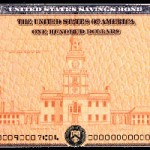Currencies: do you think in dollars?
You need to select a base currency in which to denominate your offshore wealth and keep the summary of your investments.
That may be the currency of the country in which you live. On the other hand, if that currency is one of little international importance, such as the South African rand or the Thai baht, it makes more sense to use a major unit. The US dollar will usually be the most sensible choice.
Just remember that the moment you go into an asset not denominated in your base currency, you introduce both a risk and an opportunity, as the “external” currency may rise or fall in value in terms of your base unit. Too many investors (and their advisers) think about the risk – but forget the opportunity for gain.
And remember that what counts is the currency of the underlying asset, not of the fund holding it. For instance, a dollar-denominated fund investing in Japan will be driven by the yen value of its assets over time.
Asset allocation. It’s wise to achieve some kind of balance among the various kinds of assets in which you invest.
The primary asset classes are equities, property, bonds, fixed deposits and precious metals, although some important ones such as insurance policies, and often hedge funds, are a combination of several types of asset in their underlying funds. Others marketed under misleading names such as “bonds” are in fact equity investments as they’re based on derivatives linked to stock market indexes.
Ideally your money should be where the best returns are being achieved, taking into account the risk involved. But in practice judging where that is at any time is very difficult even for the most highly-skilled fund managers.
The most sensible course is to hold a balanced mixture of several asset classes.
To what degree that balance emphasizes high-return assets such as equities, rather than low-return ones like fixed deposits, will depend on the level of risk you’re willing to accept in your portfolio as a whole, how wealthy you are (the more capital you have, the better your capacity to absorb losses), and your age (the older you are, the lower your level of portfolio risk should be).
Some assets are difficult to accommodate in a small portfolio because they are “lumpy” – some funds, for example, require a minimum initial investment of $100,000. You would need at least that to buy a small investment property, even in a developing country such as Thailand.
this article follows on from: Basics of Financial Planning
next article: Liquidity: an oft-forgotten trap
CopyRight – OnTarget 2012 by Martin Spring




